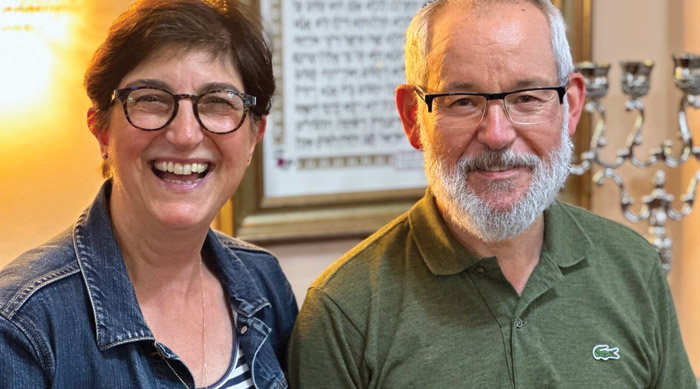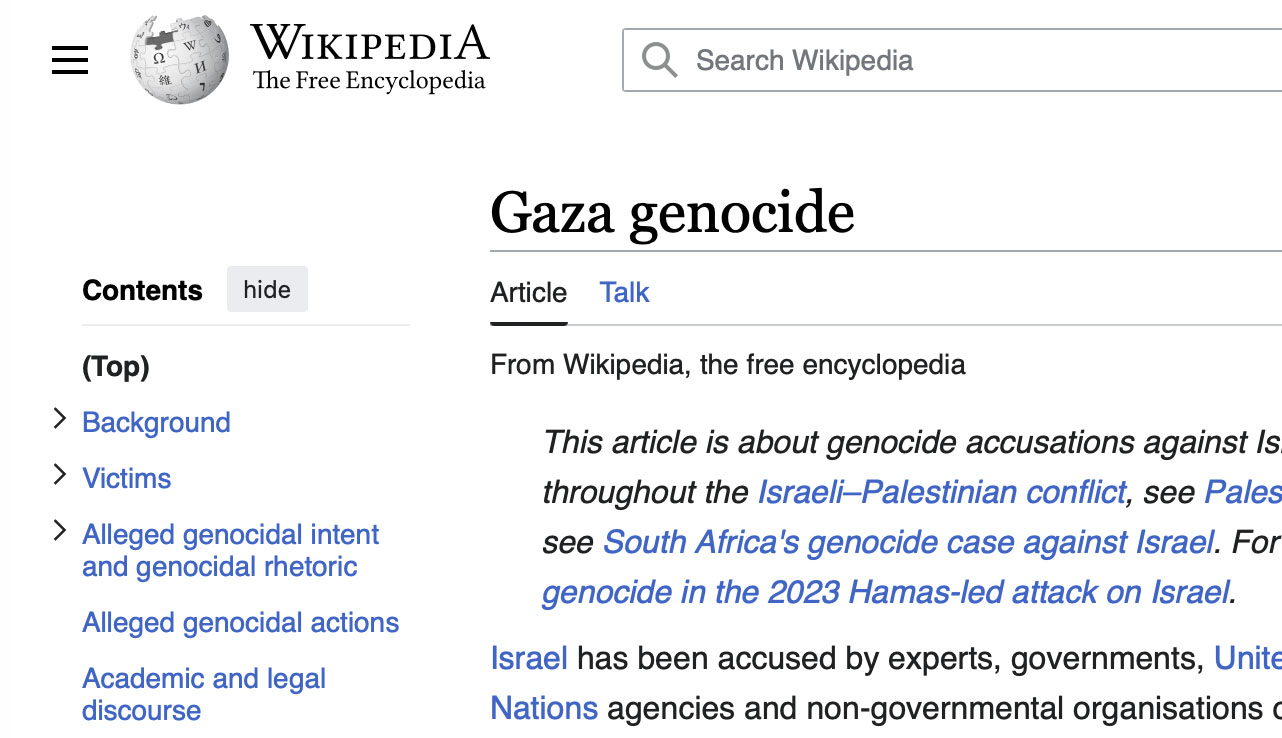Sometimes the news is just news – not good news or bad news – and still, the good-or-bad mentality of a reader is hard to overcome. So reading the new “2014 Greater Miami Jewish Federation Population Study” I could not resist the question: is it a carrier of good or bad news?
I promptly got one answer from a report by Chabad, and the answer seemed clear. “The Miami area is hotter than ever… Chabad-Lubavitch programs are simply booming there”, the Chabad website reported.
So Chabad can boast about how 26% of Miami Jews have “participated in Chabad activity”. Is this (26%) good or bad? – I still don't know. Some might say that the answer depends on ideology. Is it high or low? – I also don't know. “When I saw that number, my jaw dropped”, Prof. Ira Sheskin, Professor of Geography at the University of Miami and the author of the study, told the Chabad publication. Maybe he is just trying to be nice, I thought. I couldn’t see any other reason for jaw dropping. But Sheskin does. “We only asked about Chabad participation in one other study, the New Haven one, and the answer was 14%”, he told me. 26% is much more than 14%. Hence, the jaw dropping. On the other hand, the sample for comparison is pretty small.
I have no beef with Chabad, but we should remember that there is also no sure way for us to know if Chabad participation adds to the pool of overall participation in Jewish life, or just subtracts from the participation of Jews in non-Chabad activities. It is clear that participation in the Miami area in general is high, and we can take an educated guess about Chabad’s contribution to that fact: For some groups, Chabad is the main alternative to non-participation. This is especially true for Israeli Americans. They go to Chabad for three reasons. A. It is free – Israelis aren’t used to paying for religion. 2. It is Orthodox – Israelis are used to the Orthodox version of Judaism. 3. It is friendly to seculars – most US Israelis are secular. So surely, Chabad participation has some connection to the unique composition of the Miami Jewish community, a notable feature of which is the number of Israelis living in the city area.
Is that it?
In looking at the Miami study I learned – and not for the first time – that educated guesses such as the one above are for suckers. Data is what counts, and Sheskin is the man with the data. So I shared with him my other unsubstantiated educated guess – another one that seemed plausible. Here is where it got me.
At the top of the summary of the Miami report the authors put a useful comparison between the Miami numbers and the ones of the Pew report on Jewish Americans. This neatly presented comparison gives one a whole basket of good news without fully explaining the reasons behind the numbers, some of which we don't know, because the report is just a summary, and some we do know, but they do not appear in a highlighted fashion at the top of the report.
Here's an example of the good news from Miami: While 63% of Jewish Americans (according to Pew) “Feel a Special Responsibility to Care for Jews in Need Around the World”, in Miami the percentage is 77%.
And another one: while “the Percentage of Married Couples Who Are Intermarried” among Jewish Americans is 61%, in Miami the percentage is only 16%.
But why? Why is the Miami Jewish community so much stronger in traveling to Israel, in marrying trends, in thinking that being Jewish is “important” (46% in the general population; 74% in Miami)? My educated guess was that two main reasons stand out.
86% of Jewish Americans – according to Pew – were born in the US. 14% were born elsewhere. In Miami, 33% of Jewish adults were born outside the US. There are more than 9000 Israelis in Miami. Israelis tend to have strong feelings about Israel – as we all learned two weeks ago. And 46% of the “foreign born” are Jews from Latin America. “Links and attachment to Israel have a central role in Jewish Latin American life”, explained a JPPI report not long ago. It is a well established fact that these Jews tend to have stronger feelings when it comes to “peoplehood”. So we shouldn’t be surprised that more Israeli and Latin Jews means more attachment to Israel.
Miami also has a community that is rather old. How old? 31% old. The study itself says that it is “much higher than the US older population of 13% and nearly twice the proportion in the US Jewish population of 16%.” In other words: you find less intermarriage in Miami because 1. The population comes from groups that don’t intermarry as much, and 2. The population married long ago, when intermarriage were not as common.
So we have two unique groups that are highly represented in Miami, and that makes it a unique and exciting community. Sounds about right? I thought it was. Sheskin also says that “until I collated the data, your hypotheses seemed reasonable”. Yet it doesn’t withstand Sheskin’s detailed scrutiny – the scrutiny that he generously shared with me.
I said: foreign born – Latino and Israeli – and age are the keys for Miami’s better (or different, if you prefer a non-judgmental term) performance. Wrong, wrong, wrong.
“If we take the non-Hispanic results and compare to Pew, the results are the same” for questions such as “proud to be Jewish” and “have a strong sense of belonging” to the Jewish people, Sheskin found (his table of numbers is at the bottom of this post). Hispanics are 15% of the population and “do not have much of an impact on the overall results”, he says.
What about Israelis? Sheskin’s verdict is just the same: “given that Israelis are only 9% of adults, they do not have much of an impact on the overall results and have no impact on ‘proud’. If we take the non-Israeli results and compare to Pew, the results are the same”.
With age it becomes even more interesting. If you assumed – as I did – that elderly Jews would feel more of a “Special Responsibility to Care for Jews in Need Around the World”, think again. “The result is the opposite of your hypothesis”, Sheskin says. 77% of Miami Jews feel “special responsibility”, but among the older Miamians it is just 70%. “Without the elderly, Miami would look even better compared to Pew!” The older population also has the same percentage of intermarriage as other age groups (16%), and age “makes no difference” in answering questions about “proud to be Jewish”. They score just a little bit higher (94% vs. 92%) on the question of “belonging”.
So if origin and age do not explain Miami’s special characteristics – what does? “Miami is attracting serious young and older Jews to its community”, Shaskin says.
Here is some elaboration from him: “Miami, with its large Jewish population and significant Jewish infrastructure, is going to attract “more serious” Jews than is the case for small cities with small Jewish populations and little Jewish infrastructure. The type of Jew who would move to places with Jewish communities of a few hundred or even a few thousand are less likely to be attached to their Jewish identity than those who choose a Miami, a Chicago, or a Detroit. I contend that this is the major reason for the difference between Pew and Miami. The lesson for the American Jewish community is a geographic one. What we need to do is keep Jews living in large Jewish communities where there are other serious Jews with whom they can interact and where the infrastructure exists”.
A large community with proper services (“significant infrastructure and a strong Federation”, Sheskin says) attended by many – that is the key. 88% of children who go to preschool go to a Jewish preschool. 76% of children who went to a day camp this past summer, went to a Jewish day camp.
Why Does Miami Compare Favorably with Pew?
|
|
Special Responsibility to Care for Jews in Need Around the World (%Agree)
|
Feel a Strong Sense of Belonging to the Jewish People (% Agree)
|
Couples Intermarriage Rate
|
I am Proud to Be Jewish
|
I Feel Being Jewish Is Very Important
|
|
Miami Overall
|
77%
|
92%
|
16%
|
99%
|
74%
|
|
PEW
|
63%
|
75%
|
61%
|
94%
|
46%
|
|
Hispanic
|
88%
|
93%
|
13%
|
100%
|
79%
|
|
Non-Hispanic
|
75%
|
92%
|
17%
|
99%
|
73%
|
|
Israeli
|
93%
|
97%
|
7%
|
99%
|
91%
|
|
Non-Israeli
|
75%
|
91%
|
18%
|
99%
|
72%
|
|
Under 35
|
85%
|
93%
|
19%
|
100%
|
74%
|
|
35-49
|
83%
|
92%
|
25%
|
100%
|
72%
|
|
50-64
|
80%
|
86%
|
15%
|
98%
|
71%
|
|
65+
|
70%
|
94%
|
16%
|
99%
|
76%
|
Source: 2014 Greater Miami Jewish Federation Population Study, Main Report. This report should be available in early 2015 and will be about 1,200 pages. Note that due to sample sizes, I cannot test the hypothesis for the “Children Being Raised Jewish” question, so it is not included in the table.






















 More news and opinions than at a Shabbat dinner, right in your inbox.
More news and opinions than at a Shabbat dinner, right in your inbox.